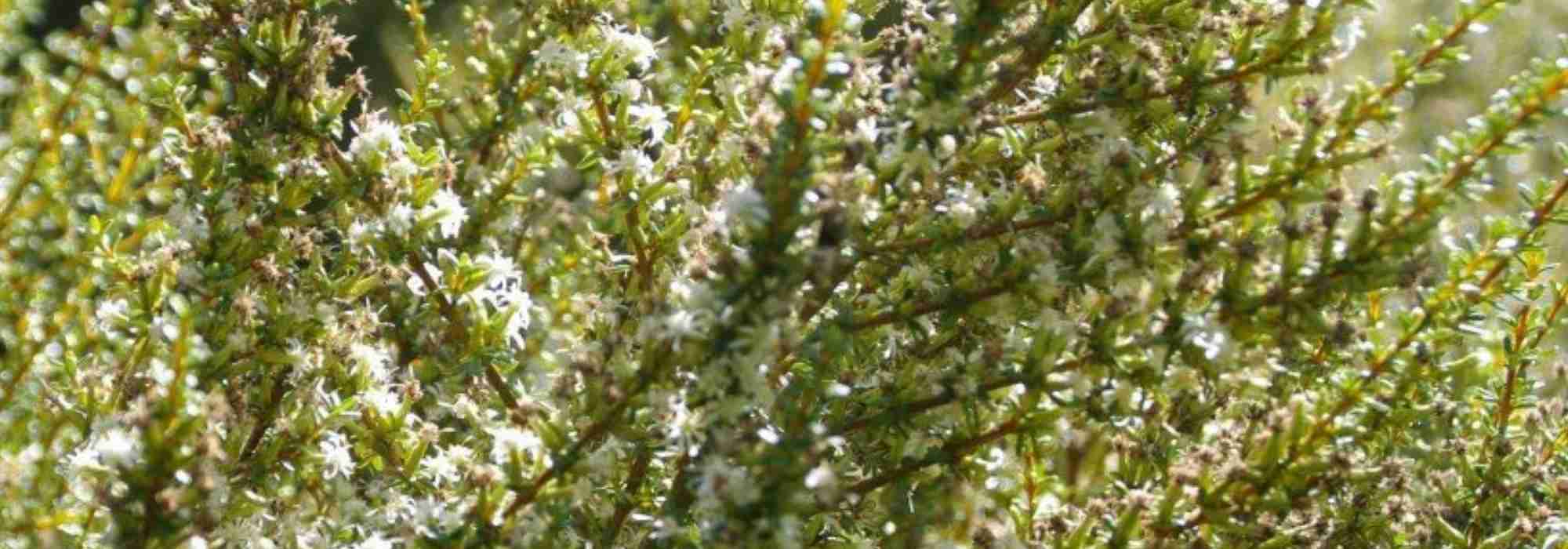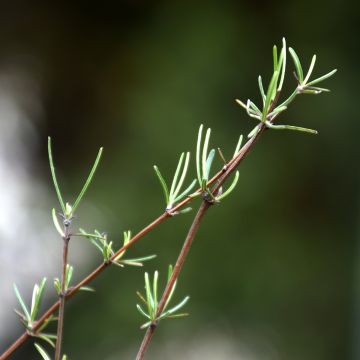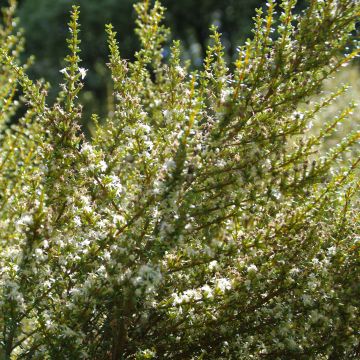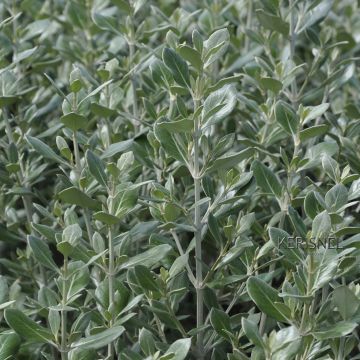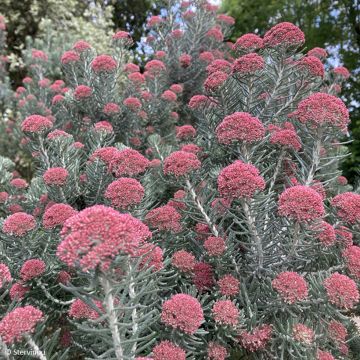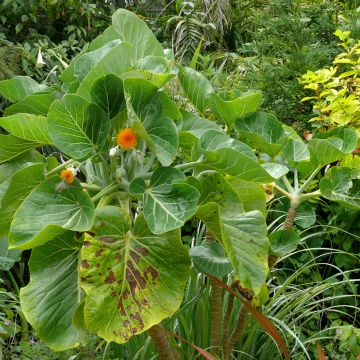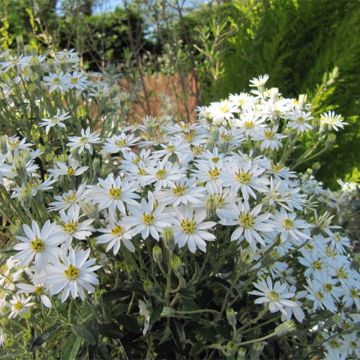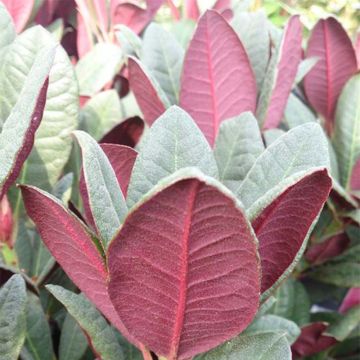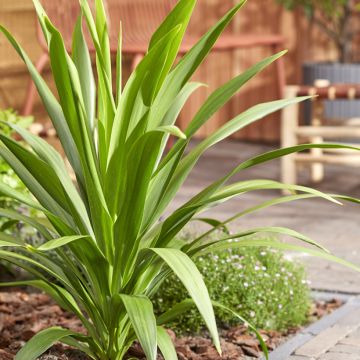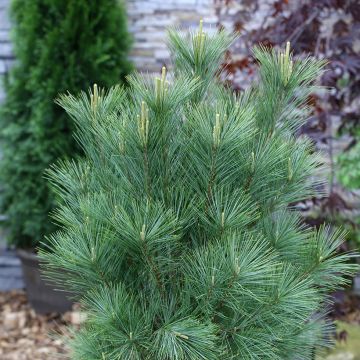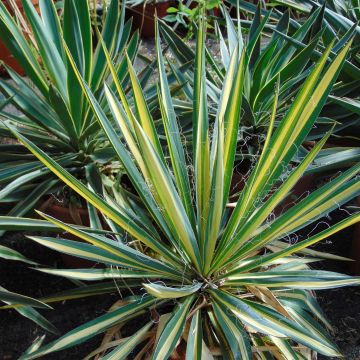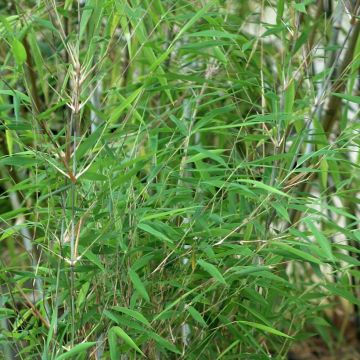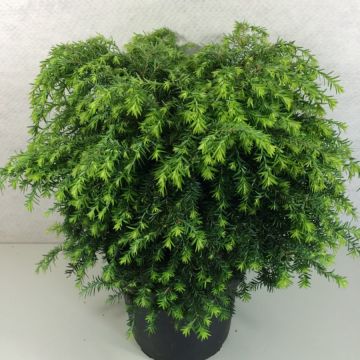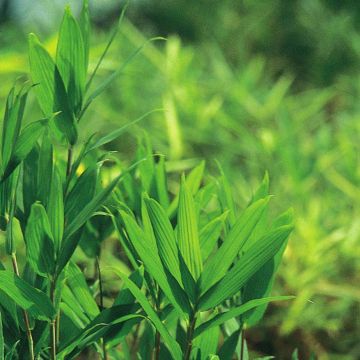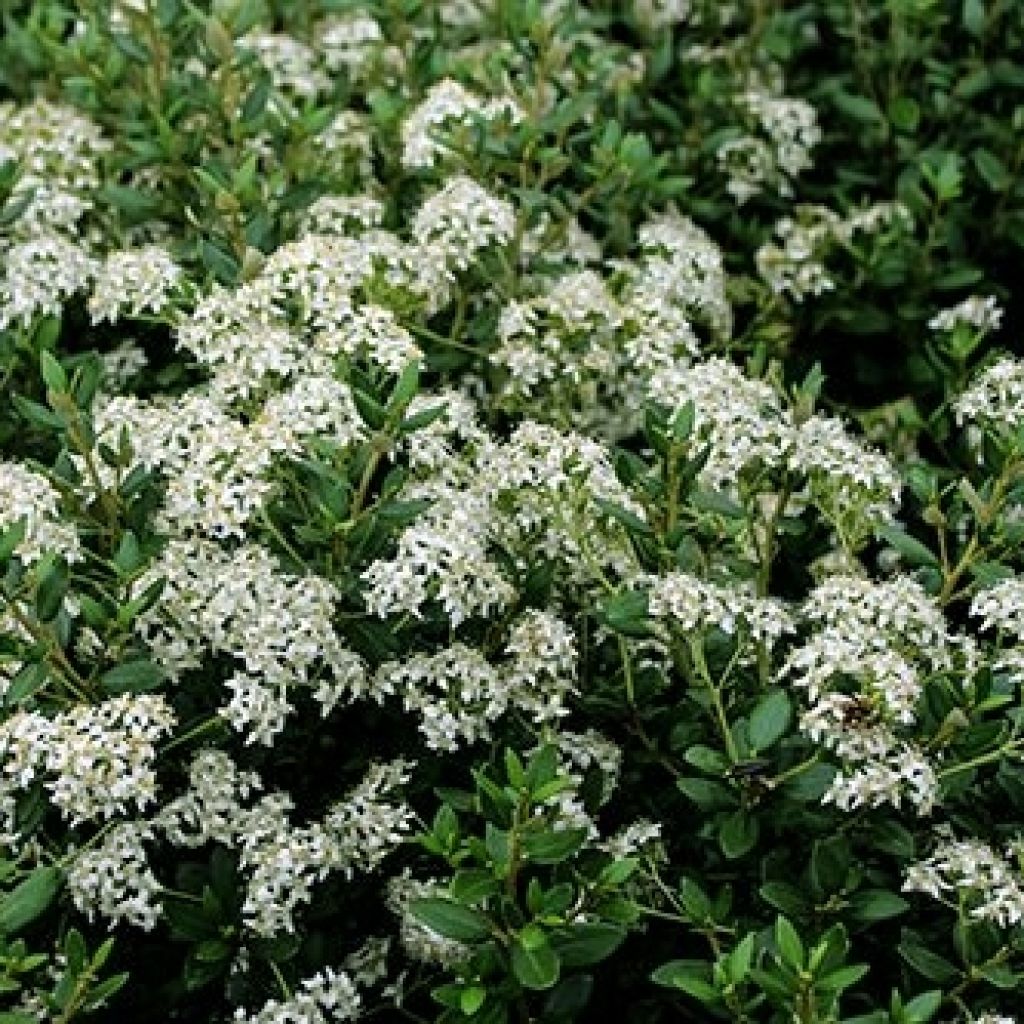

Olearia haastii - Daisy Bush


Olearia haastii - Daisy Bush
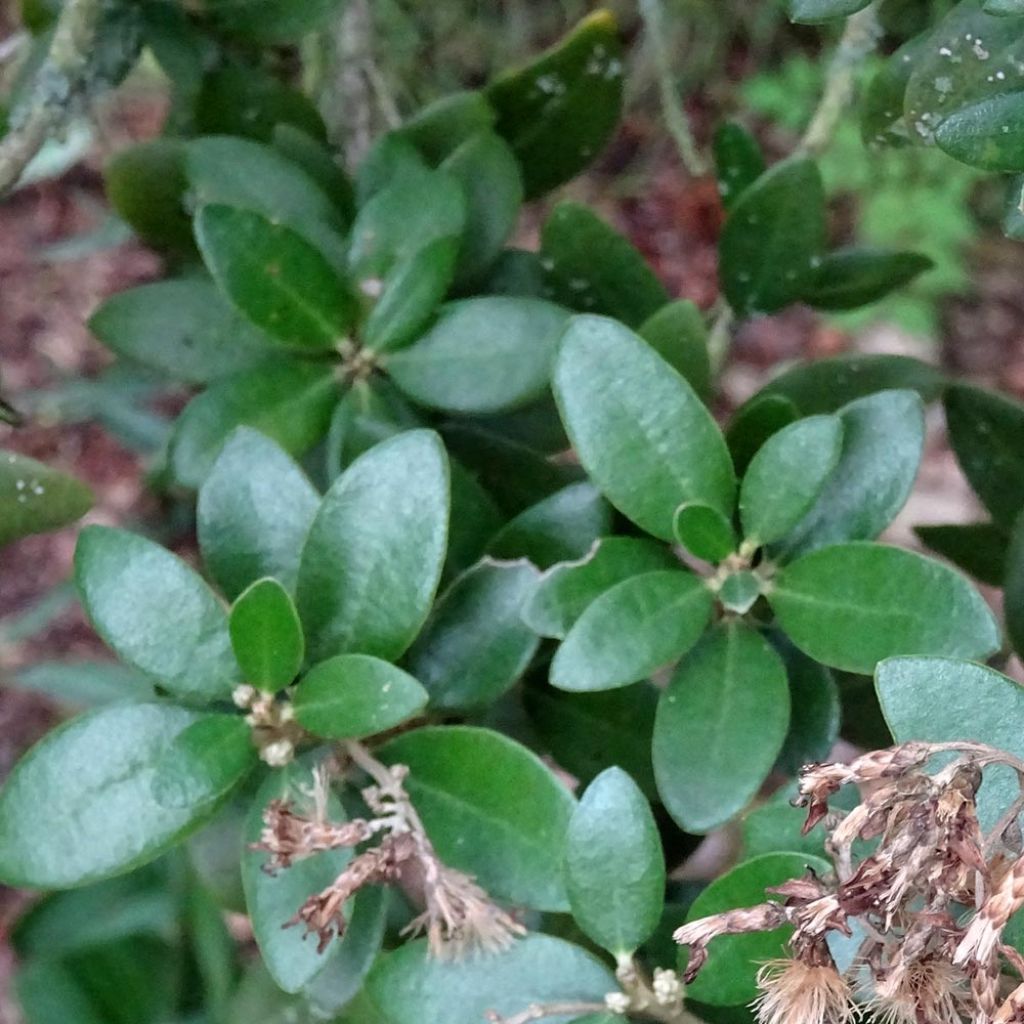

Olearia haastii - Daisy Bush
Olearia haastii - Daisy Bush
Olearia x haastii
Daisy Bush, Scilly Bush
This young plant died shortly after being planted.
Jacqueline, 26/06/2020
Special offer!
Receive a €20 voucher for any order over €90 (excluding delivery costs, credit notes, and plastic-free options)!
1- Add your favorite plants to your cart.
2- Once you have reached €90, confirm your order (you can even choose the delivery date!).
3- As soon as your order is shipped, you will receive an email containing your voucher code, valid for 3 months (90 days).
Your voucher is unique and can only be used once, for any order with a minimum value of €20, excluding delivery costs.
Can be combined with other current offers, non-divisible and non-refundable.
Home or relay delivery (depending on size and destination)
Schedule delivery date,
and select date in basket
This plant carries a 24 months recovery warranty
More information
We guarantee the quality of our plants for a full growing cycle, and will replace at our expense any plant that fails to recover under normal climatic and planting conditions.

Would this plant suit my garden?
Set up your Plantfit profile →
Description
The Olearia (x) haastii, also known as Tree Aster, is a charming evergreen bush from New Zealand, the unexpected resistance to cold deserves to be exploited in many regions with temperate winters. This lovely thick bush is covered with small, shiny green leaves. Its vegetation almost disappears in the second half of the summer under a massive flowering display, made up of numerous white and fragrant daisies. This Olearia, perfect for a small windbreak hedge by the sea, also grows inland, in a bushy bed sheltered from cold winds. To acclimatise it, ensure you provide it with well-drained, light, not too chalky to slightly acidic soil, and a sunny exposure. It can also be grown in a container, which allows it to be sheltered from severe frosts in very cold regions.
The Olearia (x) haastii is a natural hybrid between Olearia avicenniifolia and O. moschata. Despite its origins, it is hardy up to about -15°C (5 °F) in dry soil, This very thick, rather compact, and rounded bush will reach an average of 1.60 m (5 ft 2 in) in height and 1.30 m (4 ft 4 in) in width, and its growth is quite slow. It is a plant from the Asteraceae family, as evidenced by its head inflorescences that resemble those of asters or daisies. Its angular branches bear tough, ovate to elliptical, entire leaves, 2-3 cm (0.8-1.2 in) long and 1 to 1.2 cm (0.4 to 0.5 in) wide. The shiny lamina are dark green on top, but the underside is almost white. This foliage persists in winter. The remarkably abundant flowering takes place from July to September depending on the region. It takes the form of clusters called corymbs, 5 to 8 cm (2 to 3.1 in) in diameter, made up of numerous small heads 8 mm (0.3 in) wide, similar to small white daisies with a pale yellow centre. The fragrant, honey- and nectar-producing flowers atttract foraging insects. They are followed by the formation of a fruit called an achene, topped with a silky egret. Seed dispersal is ensured by the wind.
The Olearia haastii will naturally find its place in a seaside garden, where it can be planted in windbreak hedges, in front of a row of taller bushes such as the littoral griselinia Griselinia littoralis and the'Olearia traversii. It can also be combined with bushes with staggered flowering such as ceanothus, small arbutus trees or other Olearias. You can also create beautiful exotic beds by combining it with other small evergreen bushes such as Leptospermum (Nanum Tui, Martinii, Silver Sheen), Atriplex halimus, Callistemon, escallonias or even bushy artemisias. It is perfectly adapted to ocean-facing gardens where it appreciates sandy or humus-rich soils. It is happy in many sheltered gardens (in light soil) and also tolerates Mediterranean summers quite well if it benefits from occasional but copious watering and light soil without excessive chalk.
Olearia haastii - Daisy Bush in pictures
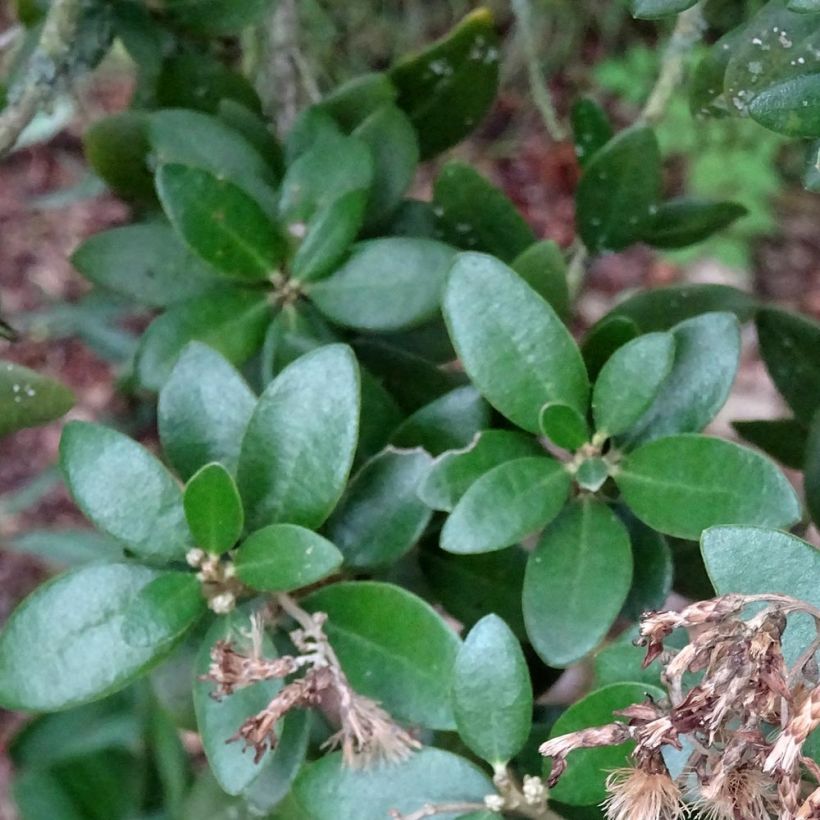

Plant habit
Flowering
Foliage
Botanical data
Olearia
x haastii
Ateraceae
Daisy Bush, Scilly Bush
Oceania
Other Olearia
View all →Planting and care
The Olearia (x) haastii will be happy in light, well-drained soil, as it cannot tolerate stagnant humidity. It prefers soil that stays a little cool in the summer, even if it tolerates summer drought quite well once established. It prefers a rather sandy but humus-rich soil. A very slightly chalky soil will also be suitable. It tolerates sea spray very well. Plant it after the last frosts or in September-October in warmer climates. It needs a very sunny and sheltered exposure from cold and dry winds to flourish. Under these conditions, it is hardy up to -12 or -15°C (10.4 or 5 °F) (in well-drained soil), and can live for many years. However, it will be essential, wherever winter is long and harsh, to grow it in a large pot to be stored in a bright, but unheated room in winter. To shape it, you can prune the stems (lightly) in March-April to encourage the plant to shoot.
Pot culture:
Provide good drainage at the bottom of the pot, which should be large, as the young plant offers a large wind catch. Use a light substrate, enriched with coarse sand and leaf soil and add a little slow-release fertiliser at the end of winter and in autumn. Water copiously in summer, letting the soil dry out a little in-between waterings. Reduce watering in winter without allowing the substrate to completely dry out.
Diseases and pests:
Cochineals sometimes attack the Olearia x haastii. Regularly inspect the stems and the underside of the leaves to detect this invader forming shields or farinose clusters. Apply an anti-cochineal treatment. In case of massive infestation, prune severely if the plant, just above the last bud located towards the base of the stem.
Propagation: by stem cuttings after flowering, in summer.
Planting period
Intended location
Care
Planting & care advice
-
, onOrder confirmed
Reply from on Promesse de fleurs
Similar products
Haven't found what you were looking for?
Hardiness is the lowest winter temperature a plant can endure without suffering serious damage or even dying. However, hardiness is affected by location (a sheltered area, such as a patio), protection (winter cover) and soil type (hardiness is improved by well-drained soil).

Photo Sharing Terms & Conditions
In order to encourage gardeners to interact and share their experiences, Promesse de fleurs offers various media enabling content to be uploaded onto its Site - in particular via the ‘Photo sharing’ module.
The User agrees to refrain from:
- Posting any content that is illegal, prejudicial, insulting, racist, inciteful to hatred, revisionist, contrary to public decency, that infringes on privacy or on the privacy rights of third parties, in particular the publicity rights of persons and goods, intellectual property rights, or the right to privacy.
- Submitting content on behalf of a third party;
- Impersonate the identity of a third party and/or publish any personal information about a third party;
In general, the User undertakes to refrain from any unethical behaviour.
All Content (in particular text, comments, files, images, photos, videos, creative works, etc.), which may be subject to property or intellectual property rights, image or other private rights, shall remain the property of the User, subject to the limited rights granted by the terms of the licence granted by Promesse de fleurs as stated below. Users are at liberty to publish or not to publish such Content on the Site, notably via the ‘Photo Sharing’ facility, and accept that this Content shall be made public and freely accessible, notably on the Internet.
Users further acknowledge, undertake to have ,and guarantee that they hold all necessary rights and permissions to publish such material on the Site, in particular with regard to the legislation in force pertaining to any privacy, property, intellectual property, image, or contractual rights, or rights of any other nature. By publishing such Content on the Site, Users acknowledge accepting full liability as publishers of the Content within the meaning of the law, and grant Promesse de fleurs, free of charge, an inclusive, worldwide licence for the said Content for the entire duration of its publication, including all reproduction, representation, up/downloading, displaying, performing, transmission, and storage rights.
Users also grant permission for their name to be linked to the Content and accept that this link may not always be made available.
By engaging in posting material, Users consent to their Content becoming automatically accessible on the Internet, in particular on other sites and/or blogs and/or web pages of the Promesse de fleurs site, including in particular social pages and the Promesse de fleurs catalogue.
Users may secure the removal of entrusted content free of charge by issuing a simple request via our contact form.
The flowering period indicated on our website applies to countries and regions located in USDA zone 8 (France, the United Kingdom, Ireland, the Netherlands, etc.)
It will vary according to where you live:
- In zones 9 to 10 (Italy, Spain, Greece, etc.), flowering will occur about 2 to 4 weeks earlier.
- In zones 6 to 7 (Germany, Poland, Slovenia, and lower mountainous regions), flowering will be delayed by 2 to 3 weeks.
- In zone 5 (Central Europe, Scandinavia), blooming will be delayed by 3 to 5 weeks.
In temperate climates, pruning of spring-flowering shrubs (forsythia, spireas, etc.) should be done just after flowering.
Pruning of summer-flowering shrubs (Indian Lilac, Perovskia, etc.) can be done in winter or spring.
In cold regions as well as with frost-sensitive plants, avoid pruning too early when severe frosts may still occur.
The planting period indicated on our website applies to countries and regions located in USDA zone 8 (France, United Kingdom, Ireland, Netherlands).
It will vary according to where you live:
- In Mediterranean zones (Marseille, Madrid, Milan, etc.), autumn and winter are the best planting periods.
- In continental zones (Strasbourg, Munich, Vienna, etc.), delay planting by 2 to 3 weeks in spring and bring it forward by 2 to 4 weeks in autumn.
- In mountainous regions (the Alps, Pyrenees, Carpathians, etc.), it is best to plant in late spring (May-June) or late summer (August-September).
The harvesting period indicated on our website applies to countries and regions in USDA zone 8 (France, England, Ireland, the Netherlands).
In colder areas (Scandinavia, Poland, Austria...) fruit and vegetable harvests are likely to be delayed by 3-4 weeks.
In warmer areas (Italy, Spain, Greece, etc.), harvesting will probably take place earlier, depending on weather conditions.
The sowing periods indicated on our website apply to countries and regions within USDA Zone 8 (France, UK, Ireland, Netherlands).
In colder areas (Scandinavia, Poland, Austria...), delay any outdoor sowing by 3-4 weeks, or sow under glass.
In warmer climes (Italy, Spain, Greece, etc.), bring outdoor sowing forward by a few weeks.






























